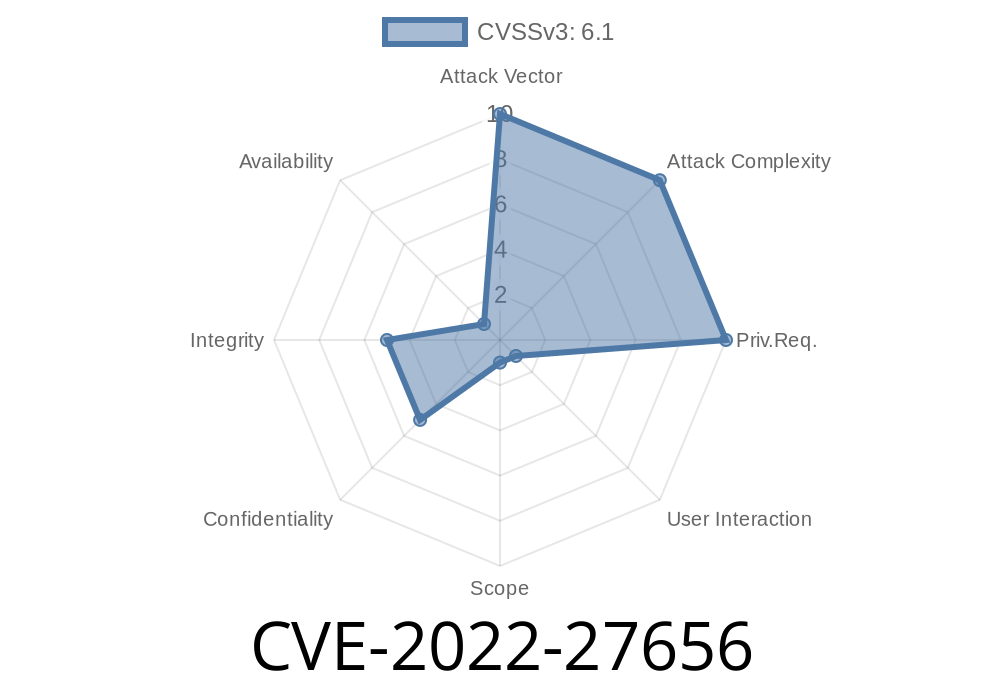A high-impact Cross-Site Scripting (XSS) vulnerability (assigned CVE-2022-27656) has been detected in the Web administration User Interface (UI) of SAP Web Dispatcher and the Internet Communication Manager (ICM), which could lead to potential data breaches and security compromises if exploited. This vulnerability emerges from insufficient encoding of user inputs within the system, thereby allowing attackers to execute malicious scripts through the affected Web UI component. In this post, we will discuss the exploit details, code snippets, and original references related to this vulnerability.
Exploit Details
The Web administration UI of SAP Web Dispatcher and ICM is meant to provide a web-based interface for managing these components, simplifying tasks such as configuration, monitoring, and troubleshooting. However, the system fails to sufficiently encode user-controlled inputs in some situations, providing an opportunity for attackers to inject malicious scripts and execute them within the context of the users' browsers.
To exploit this vulnerability, an attacker only needs to plant a specially crafted XSS payload in an inappropriate input field within the Web administration UI. Once the payload is triggered, it could allow the attacker to steal sensitive information, manipulate web content, or even execute arbitrary commands on behalf of the targeted users.
Here is an example of a code snippet demonstrating XSS payload injection
<script>alert('XSS Payload Executed');</script>
By inserting this code snippet into vulnerable input fields, an attacker could potentially execute arbitrary JavaScript code within the user's browser context when the user interacts with the injected input.
Original References
This vulnerability has been identified and documented by various security researchers and organizations. Here are the primary references for this vulnerability:
1. SAP Security Notes: https://launchpad.support.sap.com/#/notes/2964481 (requires SAP authorization for access)
2. NVD: https://nvd.nist.gov/vuln/detail/CVE-2022-27656
3. CVE Details: https://www.cvedetails.com/cve/CVE-2022-27656/
Mitigation
SAP has provided patches and remediation recommendations to address this vulnerability in their Security Note (2964481). Users are strongly advised to review the security note and apply the necessary patches or workarounds immediately to protect their systems from potential security compromises. The available patches can be downloaded from the SAP Software Download Center (SWDC).
Here are additional security practices that can help protect your system against similar vulnerabilities:
1. Implement robust input validation and encoding mechanisms for all user data and inputs to prevent malicious payloads from being executed.
2. Employ strict Content Security Policy (CSP) settings and leverage CORS headers to minimize the risk of XSS attacks.
3. Educate users on the risks associated with XSS attacks and train them to identify and avoid potential phishing or malicious links.
Conclusion
CVE-2022-27656 highlights the importance of securing web applications and deploying effective input validation and encoding mechanisms to prevent attackers from exploiting vulnerabilities like XSS. Ensure that your organization implements best security practices and applies recommended patches or workarounds to protect sensitive information from being compromised by malicious actors.
Timeline
Published on: 05/11/2022 15:15:00 UTC
Last modified on: 05/19/2022 17:49:00 UTC
